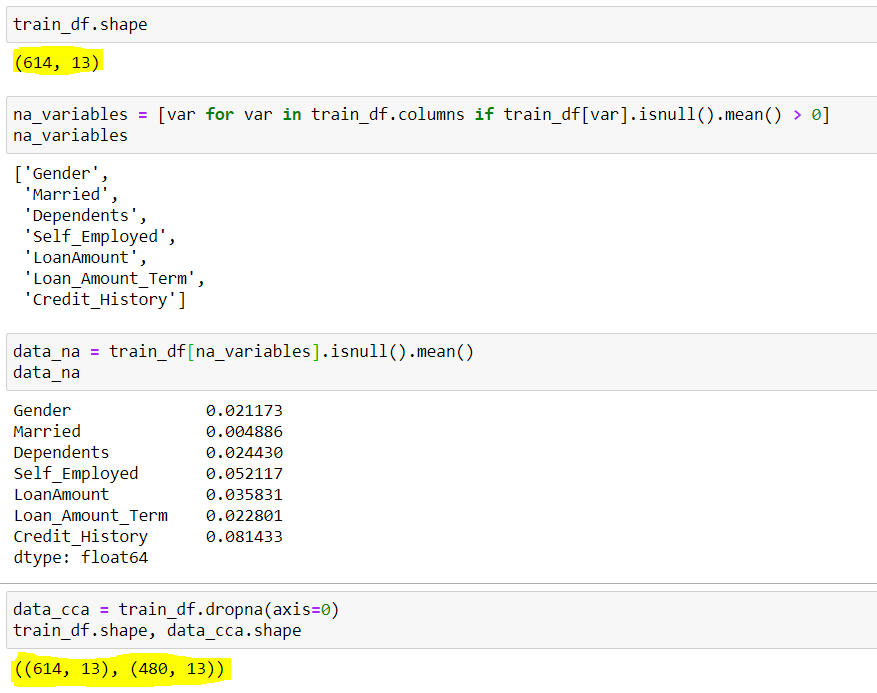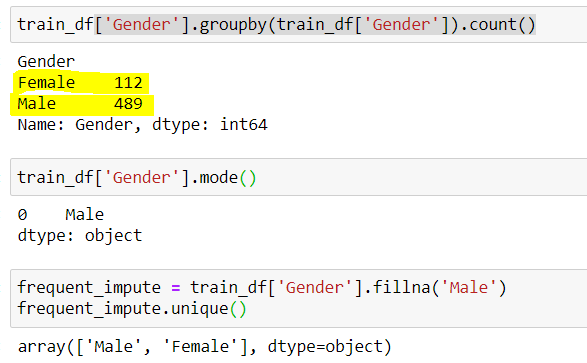In data science, missing data can significantly impact analysis quality. This article, part of the Data Science Blogathon, explores data imputation, a technique to replace missing values and retain dataset integrity. Imputation prevents issues like library incompatibility, dataset distortion, and model bias. We’ll cover key imputation methods—Complete Case Analysis (CCA), Arbitrary Value Imputation, and Frequent Category Imputation—highlighting their assumptions, benefits, and drawbacks. This guide aims to help you manage missing data effectively, ensuring robust and accurate analyses. Let’s dive into mastering data imputation techniques.
This article was published as a part of the Data Science Blogathon.
Imputation is a technique used for replacing the missing data with some substitute value to retain most of the data/information of the dataset. These techniques are used because removing the data from the dataset every time is not feasible and can lead to a reduction in the size of the dataset to a large extend, which not only raises concerns for biasing the dataset but also leads to incorrect analysis.

Not Sure What is Missing Data ? How it occurs? And its type? Have a look HERE to know more about it.
Let’s understand the concept of Imputation from the above Fig {Fig 1}. In the above image, I have tried to represent the Missing data on the left table(marked in Red) and by using the Imputation techniques we have filled the missing dataset in the right table(marked in Yellow), without reducing the actual size of the dataset. If we notice here we have increased the column size, which is possible in Imputation(Adding “Missing” category imputation).
So, after knowing the definition of Imputation, the next question is Why should we use it, and what would happen if I don’t use it?
We use imputation because Missing data can cause the below issues:
Another and the most important reason is “We want to restore the complete dataset”. This is mostly in the case when we do not want to lose any(more of) data from our dataset as all of it is important, & secondly, dataset size is not very big, and removing some part of it can have a significant impact on the final model.
Great..!! we got some basic concepts of Missing data and Imputation. Now, let’s have a look at the different techniques of Imputation and compare them. But before we jump to it, we have to know the types of data in our dataset.
Sounds strange..!!! Don’t worry… Most data is of 4 types:- Numeric, Categorical, Date-time & Mixed. These names are quite self-explanatory so not going much in-depth and describing them.
Moving on to the main highlight of this article – techniques used in data imputation.
Note:- I will be focusing only on Mixed, Numerical and Categorical Imputation here. Date-Time will be part of next article.
This is a quite straightforward method of handling the Missing Data, which directly removes the rows that have missing data i.e. we consider only those rows where we have complete data i.e. data is not missing. This method is also popularly known as “Listwise deletion”.
Code:
## To check the shape of original dataset
train_df.shape
## Output (614 rows & 13 columns)
(614, 13)
## Finding the columns that have Null Values(Missing Data)
## We are using a for loop for all the columns present in dataset with average null values greater than 0
na_variables = [var for var in train_df.columns if train_df[var].isnull().mean() > 0]
## Output of column names with null values
['Gender', 'Married', 'Dependents', 'Self_Employed', 'LoanAmount', 'Loan_Amount_Term', 'Credit_History']
## We can also see the mean Null values present in these columns {Shown in image below}
data_na = train_df[na_variables].isnull().mean()
## Implementing the CCA techniques to remove Missing Data
data_cca = train_df.dropna(axis=0) ### axis=0 is used for specifying rows
## Verifying the final shape of the remaining dataset
data_cca.shape
## Output (480 rows & 13 columns)
(480, 13)Output:

Here we can see, dataset had initially 614 rows and 13 columns, out of which 7 rows had missing data(na_variables), their mean missing rows are shown by data_na. We notice that apart from <Credit_History> & <Self_Employed> all have mean less than 5%. So as per the CCA, we dropped the rows with missing data which resulted in a dataset with only 480 rows. Around 20% of the data reduction can be seen here, which can cause many issues going ahead.
This is an important technique used in Imputation as it can handle both the Numerical and Categorical variables. This technique states that we group the missing values in a column and assign them to a new value that is far away from the range of that column. Mostly we use values like 99999999 or -9999999 or “Missing” or “Not defined” for numerical & categorical variables.
Code:
## Finding the columns that have Null Values(Missing Data)
## We are using a for loop for all the columns present in dataset with average null values greater than 0
na_variables = [ var for var in train_df.columns if train_df[var].isnull().mean() > 0 ]
## Output of column names with null values
['Gender','Married','Dependents','Self_Employed','LoanAmount','Loan_Amount_Term','Credit_History']
## Use Gender column to find the unique values in the column
train_df['Gender'].unique()
## Output
array(['Male','Female',nan])
## Here nan represent Missing Data
## Using Arbitary Imputation technique, we will Impute missing Gender with "Missing" {You can use any other value also}
arb_impute = train_df['Gender'].fillna('Missing')
arb.impute.unique()
## Output
array(['Male','Female','Missing'])Output:

We can see here column Gender had 2 Unique values {‘Male’,’Female’} and few missing values {nan}. By using the Arbitrary Imputation we filled the {nan} values in this column with {missing} thus, making 3 unique values for the variable ‘Gender’.
This technique says to replace the missing value with the variable with the highest frequency or in simple words replacing the values with the Mode of that column. This technique is also referred to as Mode Imputation.
Code:
## finding the count of unique values in Gender
train_df['Gender'].groupby(train_df['Gender']).count()
## Output (489 Male & 112 Female)
Male 489
Female 112
## Male has higgest frequency. We can also do it by checking the mode
train_df['Gender'].mode()
## Output
Male
## Using Frequent Category Imputer
frq_impute = train_df['Gender'].fillna('Male')
frq_impute.unique()
## Output
array(['Male','Female'])Output:

Here we noticed “Male” was the most frequent category thus, we used it to replace the missing data. Now we are left with only 2 categories i.e. Male & Female.
Thus, we can see every technique has its Advantages and Disadvantages, and it depends upon the dataset and the situation for which different techniques we are going to use.
Handling missing data is crucial for maintaining analysis integrity in data science. This article has covered key imputation methods—Complete Case Analysis (CCA), Arbitrary Value Imputation, and Frequent Category Imputation—highlighting their assumptions, benefits, and drawbacks. Each method has specific applications and limitations, emphasizing the importance of context in choosing the right technique. Mastering these techniques ensures robust, accurate datasets, leading to reliable and unbiased AI models and more meaningful insights from your data.
A. The different types of single imputation include Mean Imputation, Median Imputation, Mode Imputation, and Arbitrary Value Imputation. Each method replaces missing values with a single, substituted value.
A. Data imputation with mean involves replacing missing values with the mean of the available values in the dataset. This method ensures that the overall mean of the data remains unchanged.
A. Data should be imputed when missing values are present and removing these values could lead to significant data loss, potential bias, or distortion in the analysis.
A. The benefits of data imputation include maintaining dataset integrity, reducing biases, preventing analysis distortion, and ensuring compatibility with machine learning libraries, leading to more accurate and reliable models.
The media shown in this article are not owned by Analytics Vidhya and are used at the Author’s discretion.
Lorem ipsum dolor sit amet, consectetur adipiscing elit,
The assumption under which the listwise deletion is recommended is not MAR as you wrote. But it is rather MCAR (missing completely a random) which should not be confused with missing at random MAR.